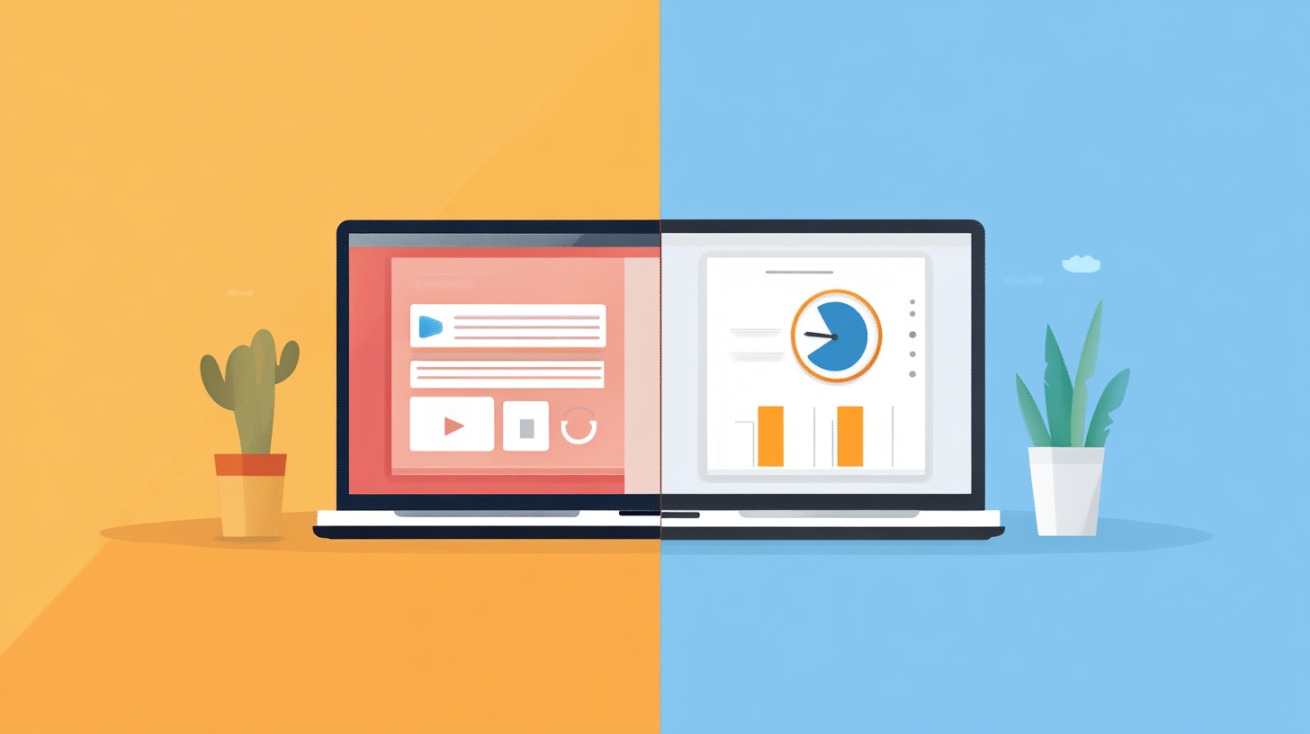According to recent Google research, mobile users now show stronger buyer intent than desktop users. Mobile traffic has overtaken desktop traffic in most industries, changing how websites are:
- Designed
- Optimized
- Ranked
Search behavior differs between users on a smartphone and those on a laptop, and so does the intent behind their queries. Google has responded by shifting focus toward mobile-first indexing, pushing businesses to rethink their SEO strategies.
Adapting to this shift isn’t just smart, it’s necessary for staying visible and competitive in search results. Knowing how mobile and desktop SEO compare helps identify where to adjust and how to prioritize.
Without further ado, let us begin.
Google’s Shift to Mobile-First Indexing
Google’s approach to indexing has changed dramatically in recent years. Previously, search rankings were based on desktop versions of websites. Mobile pages were secondary. Now, that order has flipped entirely.
Mobile-first indexing has become Google’s default system for crawling and ranking pages. In simple terms, Google primarily looks at how a website performs on mobile devices when deciding how it should appear in search results.
That means fewer clicks, fewer leads, and fewer conversions.
📯 Mobile-first indexing will be enabled by default for all new, previously unknown to Google Search, websites starting July 1, 2019 — thank you for making websites that work well on mobile from the start! ✨https://t.co/7FXf67A84f pic.twitter.com/5eYIGjOwdB
— Google Search Central (@googlesearchc) May 28, 2019
- Google uses the mobile version of a site as the primary version for indexing and ranking.
- Even users on desktop computers are served results based on mobile-indexed pages.
- Sites without proper mobile optimization may be penalized with lower rankings.
- Slow loading times, poor mobile navigation, or cluttered layouts can directly harm visibility.
- Mobile usability now affects not only ranking but also bounce rate, time on site, and conversions.
Search behavior has also evolved. Most users today search using smartphones, and Google has adapted accordingly.
Businesses that still treat mobile as secondary are already behind. A mobile-first mindset is no longer optional, it’s necessary to stay visible and competitive.
Similarities Between Mobile and Desktop SEO
Core SEO practices apply to both mobile and desktop platforms. Although screen size and user context differ, foundational elements remain constant.
- Structure
- Relevance
- Performance
Here are several shared elements that play a major role on both sides:
| SEO Element | Purpose | Impact on SEO | Quick Tip |
|---|---|---|---|
| Content Quality | Deliver relevant info | Higher rankings, more traffic | Focus on clarity and keyword intent |
| User Experience | Smooth site navigation | Lower bounce rates | Use clear menus and layouts |
| Page Speed & Reliability | Fast, stable website performance | Better user retention, higher rank | Optimize images, reduce load times |
- Titles, descriptions, and headers should all be optimized regardless of the platform.
- Both mobile and desktop users expect their data to be safe. Search engines prioritize secure websites in rankings.
- Site structure affects crawlability and user flow. Linking related content helps search engines understand your website’s structure while guiding users through relevant material.
While these aspects remain consistent, how users engage with each device introduces a sharp contrast.
That’s where the true difference between mobile and desktop SEO emerges, intent, location, and immediacy vary significantly between the two.
Key Difference: Audience Intent and Behavior
Mobile SEO and desktop SEO may follow similar principles, but they serve users with very different mindsets.
People searching on desktop devices tend to conduct broader research. They might be looking up industry information, comparing options across regions, or casually browsing.
In contrast, mobile users are usually more immediate and action-driven in their behavior.
When people search on their phone, they’re often on the move. They’re looking for a product, service, or solution they can access quickly and nearby.
Google’s mobile-first indexing takes this into account, using location data to deliver hyper-relevant, local results.
Businesses optimized for mobile have the upper hand in showing up when users are actively seeking something close to their current position.
| Desktop Users | Mobile Users |
|---|---|
| Often researching or comparing multiple sources | Frequently ready to take action (call, visit, purchase) |
| May be early in the decision-making process | Often searching in real-time while on the go |
| Less likely to have location-based urgency | Interested in proximity and fast access |
| Frequently interacting with content at home or work | Influenced by convenience and speed |
Local intent is a major driver in mobile SEO success. Restaurants, stores, service providers, and appointment-based businesses all benefit when they appear in local search results.
Targeting mobile users effectively means recognizing this urgency and tailoring both content and functionality to serve it.
Designing with Mobile in Mind

Creating a mobile-optimized site involves much more than resizing a desktop layout.
- Awkward design
- Poor usability
- It is a frustrating experience for mobile users
That backward approach fails to prioritize how users interact on smaller screens. Instead of adjusting after the fact, plan everything with mobile users as the primary audience.
Traffic analytics often reveal a surprising truth, smartphones account for the majority of visits. In many industries, mobile traffic accounts for 60%, 70%, or even 80% of all visits.
Waiting too long to prioritize mobile means losing clicks, engagement, and conversions to competitors who already took it seriously.
A mobile-first mindset requires a shift in design habits, development workflows, and content formatting. Certain design elements and strategies are especially important when planning with mobile in focus.
- Menus should be easy to access and use with one hand. A collapsible menu or hamburger icon can make navigation cleaner.
- Interactive elements must be large enough for fingers, not mouse pointers. Avoid placing buttons too close together.
- Use compressed images that still look sharp on high-resolution screens but don’t slow down page speed.
- Text should not require pinching or zooming. Fonts must be clear and legible across various screen sizes.
- Put the most important content first. Mobile users often skim, so headlines, calls to action, and key information should appear early.
- Keep input fields to a minimum. Long forms tend to frustrate mobile users and result in abandoned actions.
Checking your analytics tools gives insight into how people interact with your website.
Device type, screen size, bounce rates, and conversion data can show how well your mobile setup performs. When mobile accounts for the bulk of your audience, design choices need to reflect that reality.
Make the experience effortless, fast, and clear, because that’s what users now expect.
Actionable Steps for Stronger Mobile SEO

Mobile SEO reaches far beyond simply making a site look good on a smaller screen. It demands a sharper focus on usability, performance, and accessibility.
Users expect instant, easy-to-navigate experiences. Falling short in any area could lead to missed conversions and high bounce rates.
Several practical adjustments can make a real difference in mobile performance.
Here are essential action points every site should consider:
Title Tags and Meta Descriptions
First impressions often determine whether a user clicks or scrolls past. Mobile search results display fewer characters, leaving little room for error. Titles should be punchy, clear, and limited to 50–60 characters.
Every word counts, so focus on the most relevant keywords and value-driven language. Avoid fluff—lead with what matters.
Meta descriptions serve as a second hook. Mobile devices display only about 120 characters, so each phrase must deliver clarity and urgency.
Include a benefit, a solution, or a strong call to action. For example, instead of saying “Learn more about our services,” consider “Get fast, expert help today—no waiting.”
Popups and Interstitials
Small screens amplify annoyances. A popup that mildly disrupts a desktop user’s flow can completely derail a mobile session.
Tapping the tiny “X” in the corner is awkward, and blocked content frustrates users enough to leave.
Replace popups with more subtle elements. Use banners at the top or bottom of the screen, or timed slide-ins that don’t interfere with navigation.
If a popup must appear, delay it until after some engagement—like scrolling halfway down the page. Always ensure an easy and visible way to close it.
Schema Markup

Structured data helps search engines display enhanced information in search results. Rich snippets like star ratings, event dates, recipe details, or FAQs catch the eye and improve click-through rates.
Mobile users scan results quickly. Extra details under your listing can be the reason they choose your link over others. Add markup relevant to your industry and page type using JSON-LD. Test with Google’s Rich Results Test to confirm proper setup.
Flash Is Out – HTML5 Is In
Flash is no longer supported by most mobile browsers, making any Flash-based content useless to a growing portion of users. If a video, animation, or interactive element fails to load, frustration follows.
Use HTML5 for media elements. It’s supported across all modern devices and browsers. Performance is better, loading is faster, and compatibility is no longer a concern. Stick with tools and plugins that work with HTML5 standards.
Touch-Friendly Design
Mobile users don’t click—they tap. Designing for fingers means rethinking how large and spaced out interactive elements should be. Small buttons or tightly packed links cause accidental taps and hurt usability.
- Use a minimum touch target of 48×48 pixels
- Maintain at least 8px spacing between clickable elements
- Ensure buttons are easy to see with high contrast against backgrounds
- Keep links and buttons away from screen edges where thumbs may accidentally hit them
Menus, calls to action, and forms all benefit when built with human hands in mind.
Click-to-Call Buttons
Many users search with one goal: to make contact. If a business depends on calls to convert customers, adding a click-to-call button is a must. Requiring users to copy and paste a phone number slows them down—and most won’t bother.
Position the button where it’s easy to spot. Use clear language like “Call Now” or “Schedule by Phone.” On service-based sites, place the button near the top sections, above the fold, or pinned in a sticky header or footer for quick access.
Speed, simplicity, and convenience often mean the difference between a bounce and a booked appointment.
Mobile-Friendly Forms

Forms often cause frustration on mobile when poorly optimized. Small fields, cluttered layouts, or incorrect keyboard triggers lead to abandonment.
- Use large input fields and labels
- Trigger appropriate keyboards (e.g., number pad for phone fields)
- Reduce the number of required fields to the essentials
- Group related fields logically to simplify scanning
Each of these adjustments addresses real pain points users face. Optimizing for mobile experience isn’t optional anymore, it’s how websites remain relevant and competitive in an increasingly mobile-first world. Thoughtful tweaks can transform casual visitors into loyal customers.
Summary
Mobile SEO isn’t optional anymore, it’s essential. With more users browsing and buying on their phones, optimizing for mobile ensures:
- Better visibility
- Stronger engagement
- Higher conversions
A mobile-first approach, backed by responsive design, faster loading times, and local targeting, helps meet modern expectations.
Ignoring mobile SEO means handing your competition the advantage. Now’s the time to adapt and win where most customers are already searching.

